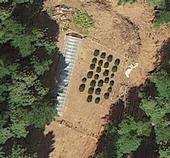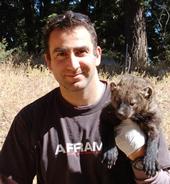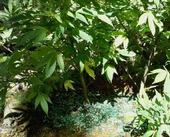- Author: Julie Van Scoy

As policy liberalization rapidly transforms the multi-billion-dollar cannabis agriculture industry in the United States, the need for regulation and assessment of environmental impacts becomes increasingly apparent.
A recent study led by UC Cooperative Extension specialist Van Butsic used high resolution satellite imagery to conduct a systematic survey of cannabis production and to explore its potential ecological consequences.
Published this spring in Environmental Research Letters, the study...
- Author: Trina Wood

Rodenticides used on illegal marijuana farms have already been shown to pose serious harm to the fisher—a cat-sized carnivore found in forests across Canada and four regions in the U.S. (Previous news article.)
Mourad Gabriel, a doctoral candidate with the Veterinary Genetics Laboratory at UC Davis School of Veterinary Medicine, provides a more comprehensive look at the situation in the recent issue of...
- Author: Anne Lombardo

There is a new predator in the forest these days. It has arisen quietly over the years. Any wildlife feeling hungry when they come upon it in the Sierra is vulnerable. This predator is amazingly small for the scope of its damage; it can’t run fast or climb high.
This new predator is rodenticide in pellet form, used in violation of all safe-use regulations in our national forests by large-scale marijuana growers. Rodenticides are being used to protect young and tasty marijuana seedlings from wildlife roaming through the forest looking for a meal. Chemicals never meant to be used more than 50 feet from homes are now scattered across forest hillsides. Piles of poisons are left around hundreds of plants even though only a few...
- Contributor: Ann King Filmer
- Author: Kat Kerlin

Rat poison used on illegal marijuana farms may be sickening and killing the fisher, a rare forest carnivore that makes its home in some of the most remote areas of California, according to a team of researchers led by University of California, Davis, veterinary scientists.
Researchers discovered commercial rodenticide in dead fishers in Humboldt County near Redwood National Park and in the southern Sierra Nevada in and around Yosemite National Park. The study, published July 13 in the journal PLoS ONE, says illegal marijuana farms are a likely source. Some marijuana growers apply the poisons to deter a wide range of animals from encroaching on their crops.
Fishers in California, Oregon and Washington have been declared a...
- Author: Brenda Dawson

While the legality of California’s medical marijuana dispensaries is being debated in courtrooms, a UC Cooperative Extension forestry and wildlands ecology advisor says there are a number of issues related to the unregulated land-use practices of illicit cannabis growing that have not been addressed.
“As a forest ecologist, I spend a lot of time outdoors, and I talk to thousands of people every year about forest-related subject matter,” says Greg Giusti. “And you can’t talk to anybody today on the North Coast without the topic of cannabis growing and cannabis impacts on land coming up.”
In Lake and Mendocino counties, Giusti performs research and shares...



